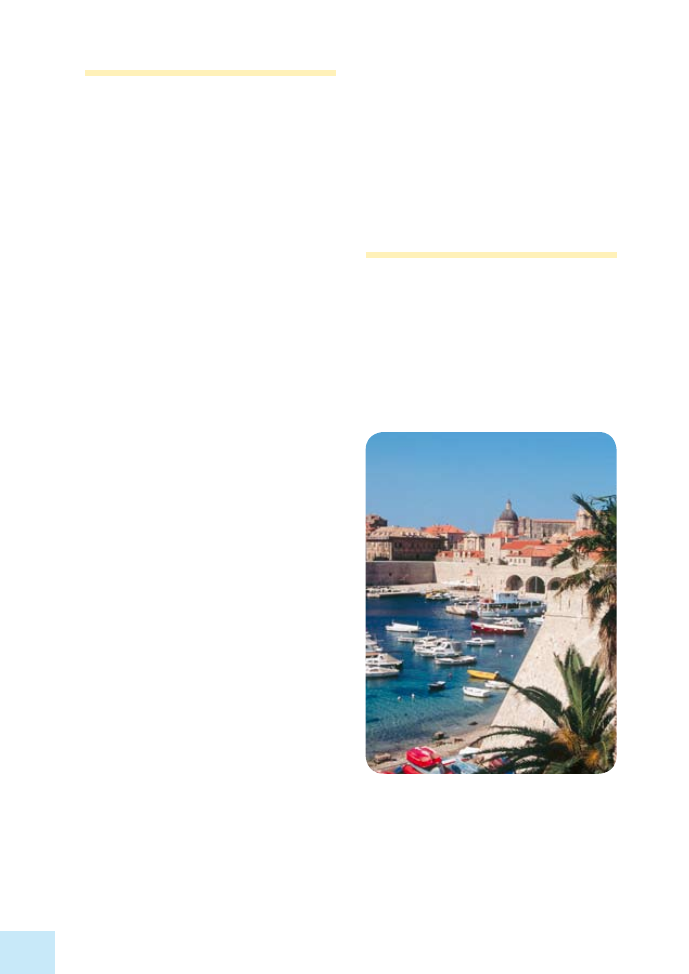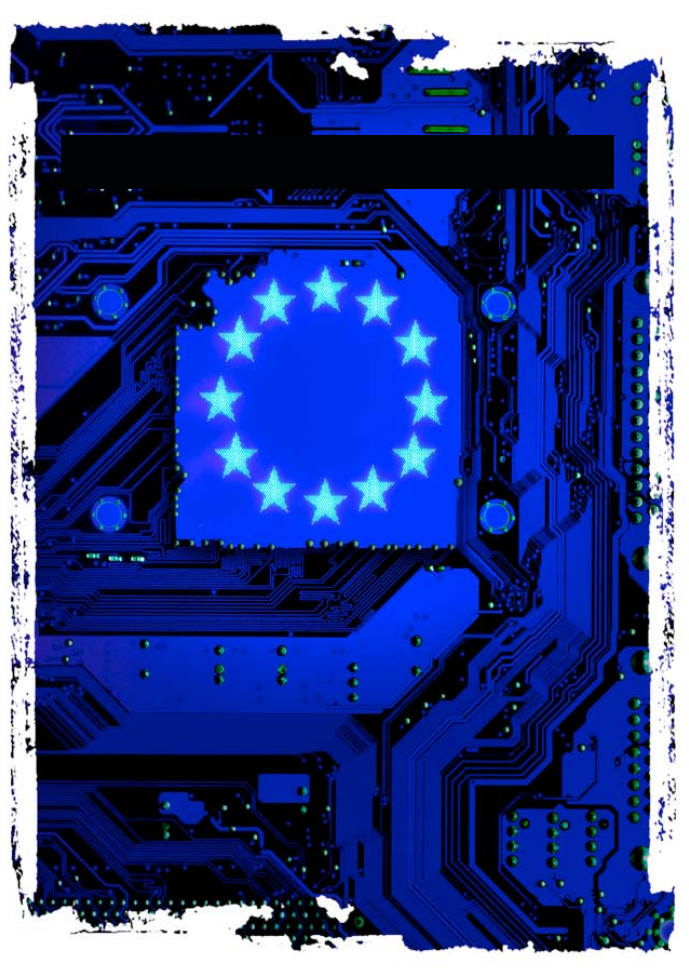ВУЗ: Не указан
Категория: Не указан
Дисциплина: Не указана
Добавлен: 07.04.2021
Просмотров: 625
Скачиваний: 1

4
4
II. Membership conditions
a. Legal requirements
European integration has always been
a political and economic process that is
open to all European countries prepared to
sign up to the founding treaties and take on
board the full body of EU law. According to
Article 2 of the Treaty of Rome ‘any Euro-
pean state may apply to become a member
of the Community’.
Article F of the Maastricht Treaty adds that
the member states shall have ‘systems of
government […] founded on the principles
of democracy’.
b. The Copenhagen criteria
In 99, following requests from the former
communist countries to join the Union, the
European Council laid down three criteria they
should fulfil so as to become members. By the
time they join, new members must have:
• stable institutions guaranteeing de-
mocracy, the rule of law, human rights and
respect for and protection of minorities;
• a functioning market economy and the
capacity to cope with competitive pressure
and market forces within the Union;
• the ability to take on the obligations of
membership, including support for the aims
of the Union. They must have a public ad-
ministration capable of applying and man-
aging EU laws in practice.
c. The accession process
The entry negotiations are carried out be-
tween each candidate country and the Euro-
pean Commission which represents the EU.
Once these are concluded, the decision to
allow a new country to join the EU must be
taken unanimously by the existing member
states meeting in the Council. The European
Parliament must give its assent through a
positive vote by an absolute majority of its
members. All accession treaties must then
be ratified by the member states and the
candidate countries in accordance with each
country’s own constitutional procedures.
During the years of negotiation, candidate
countries receive EU aid so as to make it
easier for them to catch up economically.
For the enlargement of the 0 countries in
2004, this involved a package of
€
4 billion
aimed mainly at funding structural projects
to allow the newcomers to fulfil the obliga-
tions of membership.
III. How large can
the EU become?
a. Geographic frontiers
The debates concerning ratification of the
EU’s Constitutional Treaty that took place in
most member countries showed that many
Europeans had a number of concerns about
the final borders of the European Union and
even about its identity. There are no sim-
ple answers to these questions, particularly
since each country views its geopolitical or
economic interests differently. The Baltic
countries and Poland advocate EU mem-
bership for Ukraine. The possible entry of
Turkey will raise the question of the status
of some countries in the Caucasus such as
Georgia and Armenia.
© Inger Hogstrom/Van Parys Media
The ‘Pearl of the Adriatic’, Dubrovnik in Croatia.
Europe in 12 lessons
Despite fulfilling the membership condi-
tions, Iceland, Norway, Switzerland and
Liechtenstein are not members of the Euro-
pean Union because public opinion in those
countries is currently against joining.
The political situation in Belarus and the
strategic position of Moldova still pose
problems. It is clear that Russian member-
ship would create unacceptable imbalances
in the European Union, both politically and
geographically.
b. Administrative constraints
Furthermore, the current membership
rules, as defined in the Treaty of Nice from
200, set the institutional framework for
a Union with a maximum of 2 members.
To go beyond this figure will require a new
intergovernmental agreement on the rela-
tionships between the member states within
the institutions.
The ability of the Union to function in ac-
cordance with the fundamental principles
of the Treaties (see Chapter 4: ‘How does
the EU work?’) will be harder with more than
0 countries. The decision-making procedures
would have to be thoroughly re-examined to
avoid paralysis and allow the EU to retain
the ability to act.
Then there are sensitive issues like the use
of the official languages. Bulgarian and Ro-
manian membership brought the number
of official languages to 2. EU enlargement
must not make ordinary people feel that their
national or regional identities are being di-
luted within a standardised EU.
IV. Candidates and
non-candidates
The European Union has two parallel poli-
cies for handling its relations with neigh-
bouring countries depending on whether
they are on the current list of potential can-
didates or not.
•
Stabilisation and association agree-
ments
open up the possibility for a country
to become a candidate for EU membership
at the end of a negotiation process. The
first such agreements were with Croatia
and the former Yugoslav Republic of
Macedonia (FYROM). They were followed
by Albania. Other potential candidates in
this context are Bosnia and Herzegovina,
Montenegro and Serbia.
• Under its
neighbourhood policy,
the
EU has trade and cooperation agreements
with non-member countries in the southern
Mediterranean and the southern Caucasus
as well as with countries in eastern Europe
whose future relationship with the European
Union remains unclear.

.4. How does the EU work?
4. How does the EU work?
Europe in 12 lessons
I. The decision-making triangle
The European Union is more than just a con-
federation of countries, but it is not a feder-
al state. It is, in fact, a new type of structure
that does not fall into any traditional legal
category. Its political system is historically
unique and has been constantly evolving
over more than 0 years.
The Treaties (known as ‘primary’ legislation),
are the basis for a large body of ‘secondary’
legislation which has a direct impact on the
daily lives of EU citizens. The secondary leg-
islation consists mainly of regulations, direc-
tives and recommendations adopted by the
EU institutions.
These laws, along with EU policies in gen-
eral, are the result of decisions taken by the
institutional triangle made up of the Coun-
cil (representing national governments),
the European Parliament (representing the
people) and the European Commission (a
body independent of EU governments that
upholds the collective European interest).
a. The Council of the European
Union and the European Council
The Council of the European Union (also
known as the Council of Ministers) is the
EU’s main decision-making body. The EU
member states take it in turns to hold the
Council Presidency for a six-month period.
Every Council meeting is attended by one
minister from each EU country. Which min-
isters attend a meeting depends on which
topic is on the agenda: foreign affairs, ag-
riculture, industry, transport, the environ-
ment, etc.
The Council has legislative power, which it
shares with the European Parliament under
the ‘co-decision procedure’. In addition to
this, the Council and the Parliament share
equal responsibility for adopting the EU
budget. The Council also concludes interna-
tional agreements that have been negoti-
ated by the Commission.
• The Council of Ministers of the European Union, which represents the
member states, is the EU’s main decision-taking body. When it meets
at Heads of State or Government level, it becomes the European
Council whose role is to provide the EU with political impetus
on key issues.
• The European Parliament, which represents the people, shares
legislative and budgetary power with the Council of
the European Union.
• The European Commission, which represents the common interest of
the EU, is the main executive body. It has the right to propose
legislation and ensures that EU policies are properly implemented.
The European Parliament: his vote is your voice.
© EC
8
8
According to the Treaties, the Council has
to take its decisions either by a simple ma-
jority vote, a ‘qualified majority’ vote or
unanimously, depending on the subject to
be decided.
The Council has to agree unanimously on
important questions such as amending the
Treaties, launching a new common policy or
allowing a new country to join the Union.
In most other cases, qualified majority voting
is used. This means that a Council decision
is adopted if a specified minimum number
of votes are cast in its favour. The number of
votes allocated to each EU country roughly
reflects the size of its population.
The
European Council
meets, in prin-
ciple, four times a year. It is chaired by
the president or prime minister of the coun-
try holding the presidency of the Council
of the European Union at the time. The
President of the European Commission
attends as a full member.
Under the Treaty of Maastricht, the Europe-
an Council officially became an initiator of
the Union’s major policies and was empow-
ered to settle difficult issues on which minis-
ters meeting in the Council of the European
Union fail to agree.
The European Council also deals with press-
ing international issues through the common
foreign and security policy (CFSP), which is
intended to allow the EU to speak with one
voice on diplomatic questions.
b. The European Parliament
The European Parliament is the elected body
that represents the EU’s citizens. It exercises
political supervision over the EU’s activities
and takes part in the legislative process.
Since 99, members of the European Par-
liament (MEPs) have been directly elected,
by universal suffrage, every five years.
Number of votes for each country in the Council
Germany, France, Italy and the United Kingdom
29
Spain and Poland
2
Romania
4
Netherlands
Belgium, Czech Republic, Greece, Hungary and Portugal
2
Austria, Bulgaria and Sweden
0
Denmark, Ireland, Lithuania, Slovakia and Finland
Estonia, Cyprus, Latvia, Luxembourg and Slovenia
4
Malta
Total:
345
A minimum of 2 votes out of 4 (.9%) is required to reach a qualified majority.
In addition:
• a majority of member states (in some cases two thirds) must approve the decision, and
• any member state may ask for confirmation that the votes cast in favour represent
at least 2% of the EU’s total population